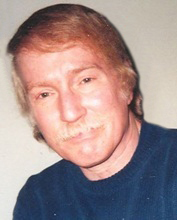
Dr. Robert T. Boyd is a research anthropologist at Portland State University, in Portland, Oregon. Dr. Boyd’s research interests include Northwest Native American early contact era ethnohistory, culture contact and change, disease and demography, historical epidemiology, depopulation and its cultural effects, hunter-gatherer resource management and anthropogenic fire.
Dr. Boyd and his co-authors have most recently published Chinookan Peoples of the Lower Columbia with the University of Washington Press.
Background
When I was growing up in Portland, Oregon in the 1950s and sixties, Northwest Coast Native culture was all but invisible to me. That changed when I took a class in Northwest Native cultures from Wayne Suttles at Portland State College and was introduced to the Native cultures of (mostly) British Columbia and Washington State. More Native peoples had survived the early years of contact there, knowledgeable Native informants had lived into more recent times, and the public had been made aware of their uniqueness through such books as Ruth Benedict’s Patterns of Culture and Bill Holm’s analysis of the North Coast art style.
The Native peoples of Oregon suffered more from contact and have taken longer to get their bearings and reassert their identities. Tribal groups such as Siletz and Grand Ronde were terminated when I was a youngster, but regained their federal recognition in the 1970s and eighties. They are now in the process of reclaiming their cultural heritage and rightful place in public affairs and the public eye.
Disease Research
My first question in my research on Northwest Natives made sense in terms of their invisibility when I was growing up—what happened to them? My earliest university classes revealed that Northwest Natives were not only very much there in our region’s past but possessed of an incredibly rich culture, dramatically different from our own. After receiving my BA from PSU and MA from UCLA, both in anthropology, Suttles set me off on examining the epidemic that caused the great decline in population among most western Oregon Indians, and the product of that research was my first journal article, “Another Look at the ‘Fever and Ague’ of western Oregon,” published in Ethnohistory in 1975, when I was 29.
Back in graduate school at the University of Washington in 1977, I expanded on that beginning, and selected as my dissertation topic the history of all diseases introduced by Euro-Americans to the Northwest Coast Culture Area (Oregon, Washington and British Columbia) in the first century of contact. The list included not just the “fever” (malaria), but also smallpox (several epidemics), STDs, measles, dysentery, and others. I used the several Native population estimates compiled by explorers, traders, and treaty negotiators to demonstrate a dramatic population decline throughout the region, mostly caused by introduced diseases. My dissertation was completed in 1985. My disease research is summarized in several places, including articles on measles, smallpox, and Plateau disease and demography (with Dolores Gregory) in the Oregon Historical Quarterly, BC Studies, and the Journal of Northwest Anthropology (1994, 1996, and 2007), chapters on “Demographic History” in the Northwest Coast and Plateau volumes of the Smithsonian’s Handbook of North American Indians (1990 and 1998), and my 1999 book, The Coming of the Spirit of Pestilence: introduced infectious diseases and population decline among Northwest Coast Indians, 1774-1874.
Reconstructing Native Culture History
Having (more or less!) solved that research problem—a devastating story, but one that needed to be told—I began a second, more positive track in my research: recovering the traditional culture and history of Northwest Native peoples as best I could, given the data available to me. I had the distinct disadvantage of being in the third generation of Northwest Native researchers—after Franz Boas and others in the late 1800s and early 1900s, and Suttles et al in the mid 1900s—at a time when Native peoples who had lived in pre-reservation times were gone, and those who had learned the traditional ways were dwindling in numbers. But I had the advantage of having all this previous primary research available to me, and being active at a time when archives were opening up and the vast body of primary written sources from the early contact era were becoming more accessible. So that’s where I concentrated my own research.
My first foray into rediscovering and reconstructing Native culture history was People of The Dalles: the Indians of Wascopam Mission (1996), as its subtitle says, assembled from the unpublished letters and diaries of the Methodist missionaries between 1838 and 1844. My second project was an edited volume which investigated the (then unrecognized) role of purposive burning by Northwest Natives in managing several important resource species and the land on which they occurred. That was Indians, Fire, and the Land in the Pacific Northwest (1999). The latest book is another edited volume, Chinookan Peoples of the Lower Columbia (2013). Ken Ames of Portland State University and Tony Johnson of the Chinook Nation co-edited it with me. CPLC examines all (or almost all) aspects of Chinookan Indian culture, from Astoria to Cascade Locks, pre-contact to the present. Both of the latter two books have been truly cooperative efforts, blessed by the great knowledge, stimulating research, and groundbreaking insights of several colleagues, academics and Natives alike.
> Contact Robert T. Boyd
Email: tyeex@aol.com